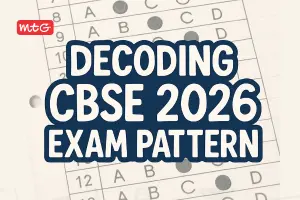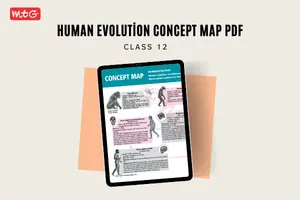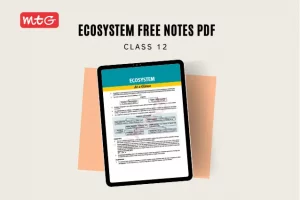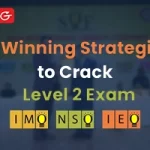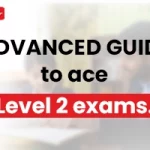The MCQ questions for Class 10 Science with answers are prepared in line with the latest exam pattern according to the Class 10 Science syllabus. By solving these MCQs on Magnetic Effects of Electric Current, students can assess their exam preparation level. Students are encouraged to practice more Class 10 Science MCQ questions in chapter 12 on Magnetic Effects of Electric Current with answers available here. These MCQs facilitate quick revision of the topic, thereby enhancing your understanding. Take a look at the MCQ questions for Class 10 and verify your answers while preparing for the exam.
Latest – Electricity Class 10 Science MCQ With Solutions
Important – Class 10 Mathematics MCQ: Free Chapter-Wise PDFs
CBSE Class 10 Chapter 12 Magnetic Effects of Electric Current MCQs
Check below the CBSE Class 10 Science MCQ with answers and Clear your idea of chapter 12 Magnetic Effects of Electric Current.
Q.1. An electric current can be produced in a closed loop
(a) by connecting it to a battery, but not by moving a magnet near it.
(b) by moving a magnet near the loop, but not by connecting a battery.
(c) by connecting it to a battery, as well as by moving a magnet near it.
(d) neither by connecting a battery nor by moving a magnet near it.
Answer
Practice More – CBSE Practice Papers Class 10 (2024) – Free PDF Download
Q.2. An electric motor
(a) provides a constant potential difference.
(b) measures electric current.
(c) measures potential difference.
(d) converts electrical energy into kinetic energy.
Answer
Q.3. An a-particle projected towards West is deflected towards north by a magnetic field. Then the direction of the magnetic field is towards
(a) south (b) east
(c) downward (d) upward
Answer
(d) Using Fleming’s left hand rule the direction of magnetic field is upward.
Also Check – CBSE Sample Papers Class 10 for 2024 Board Exams
Q.4. What is not true about poles of a magnet?
(a) Poles exist always in pairs.
(b) Poles of a magnet are always unlike.
(c) Poles of a magnet are of equal strength.
(d) Poles are situated a little outwards from the geometrical ends of magnet.
Answer
Q.5. The electric geysers are used on the circuit with
(a) 15 A current rating
(b) 5 A current rating
(c) 10 A current rating
(d) none of these
Answer
Q.6. If the coil is kept stationary with respect to the magnet, the galvanometer
(a) deflect towards right.
(b) deflect towards left.
(c) deflect first towards right then towards left.
(d) does not deflect.
Answer
Q.7. The shape of the field lines of a magnetic field around a straight conducting wire is
(a) square (b) circular
(c) elliptical (d) pyramidal
Answer
Q.8. Which of the following does not belong to the group formed by the others?
(a) Generator (b) Dynamo
(c) Motor (d) Transformer
Answer
Generator, dynamo and transformer work on the principle of electromagnetic induction.
CBSE Class 10 Resources – Important Formula Book For 10th Science
Q.9. The magnetic field lines inside a current carrying solenoid are
(a) circular
(b) circular, but they do not cross each other
(c) along the axis and parallel to each other
(d) all of these
Answer
Q.10. The moving part of an electric motor is called
(a) armature (b) split ring
(c) slip-ring (d) shaft
Answer
CBSE Class 10 Science Magnetic Effects of Electric Current MCQs – PDF Download
Answers-
Summary for NCERT class 10 science chapter 12 – “Magnetic Effects of Electric Current”
- A compass needle is a small magnet. Its one end, which points towards north, is called a north pole, and the other end, which points towards south, is called a south pole.
- A magnetic field exists in the region surrounding a magnet, in which the force of the magnet can be detected.
- Field lines are used to represent a magnetic field. A field line is the path along which a hypothetical free north pole would tend to move. The direction of the magnetic field at a point is given by the direction that a north pole placed at that point would take. Field lines are shown closer together where the magnetic field is greater.
- A metallic wire carrying an electric current has associated with it a magnetic field. The field lines about the wire consist of a series of concentric circles whose direction is given by the right-hand rule.
- The pattern of the magnetic field around a conductor due to an electric current flowing through it depends on the shape of the conductor. The magnetic field of a solenoid carrying a current is similar to that of a bar magnet.
- An electromagnet consists of a core of soft iron wrapped around with a coil of insulated copper wire.
- A current-carrying conductor when placed in a magnetic field experiences a force. If the direction of the field and that of the current are mutually perpendicular to each other, then the force acting on the conductor will be perpendicular to both and will be given by Fleming’s left-hand rule.
- In our houses we receive AC electric power of 220 V with a frequency of 50 Hz. One of the wires in this supply is with red insulation, called live wire. The other one is of black insulation, which is a neutral wire. The potential difference between the two is 220 V. The third is the earth wire that has green insulation and this is connected to a metallic body deep inside earth. It is used as a safety measure to ensure that any leakage of current to a metallic body does not give any severe shock to a user
- Fuse is the most important safety device, used for protecting the circuits due to short-circuiting or overloading of the circuits.
Best Reference Books for Class 10 Science
- NCERT Textbook + Exemplar Problems-Solutions
- Foundation Course Physics, Chemistry and Biology
- NCERT at your Fingertips Science
- 100 Percent Science
- CBSE 10 Years Chapterwise Topicwise Solved Papers AKA CBSE Champion
- CBSE Chapterwise Question Bank
- CBSE Score More 15 Sample Question Papers
We hope the MCQs for the CBSE Class 10 Science Chapter 12 on Magnetic Effects of Electric Current are helpful for your board exam preparation.
Keep learning and stay updated with us for more CBSE exam updates.





